Hey There!
I'm Reina
I am a full-time traveling registered nurse, fitness enthusiast, and nutrition expert. Every morning I wake up intending to bring awareness of the importance of health and spiritual wellness, especially to the traveling community. At Messy Bun Traveler, we promote travel that allows the traveler to either kick-start, maintain, or enhance a healthy lifestyle. So whether you're someone who travels for business, travels for pleasure, or new to travel and looking for health advice while on the road, this blog is for you!
inspiration
Categories:
health
destinations
fitness
resources
wellness
Privacy & Disclosure
The Messy Bun Traveler is designed to bring you fun stories, destination guides, and healthy travel advice. To help cover the cost of running this site, all posts are sprinkled with hand-selected affiliate links. When you click on one of these links and make a purchase, I will earn a small commission at no additional cost to you. I only accept affiliate links and paid advertisements from brands I believe in, trust and use personally. Thank you for your continued support!
Ultimate India Travel Guide: Everything You Need to Know Before Visiting India
April 4, 2024

A trip to India is an adventure unlike any other. From the bustling markets of Mumbai to the serene beaches of Goa and the cultural wonders of Delhi, India packs a punch when it comes to offering a diverse and vibrant travel experience.
I spent just over two weeks exploring India, and it was one of the most unique countries I’ve ever visited.
I chose to visit India because that’s where my mom was born, and many members of my mom’s side of the family still reside in India today. Visiting my homeland and immersing myself in the culture I stemmed from was a truly surreal experience.
For first-time travelers or those who are looking to explore the rich beauty and complexities of the Indian subcontinent, this comprehensive guide will help solidify your travel plans and ensure you make the most of your trip!
Summary
General Facts About India
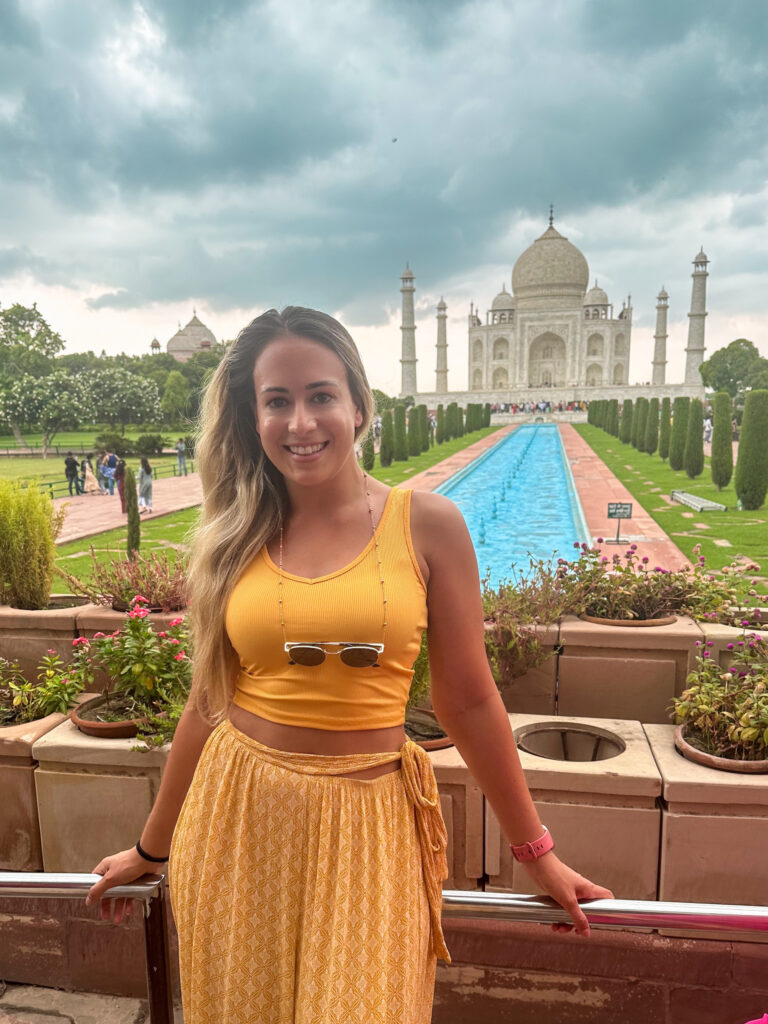
Namaste Greeting
Upon your arrival, you’ll soon grow accustomed to the traditional Indian greeting, ‘Namaste’ where one places their hands together and gives a slight bow.
In the simplest form, it means ‘hello’, but dig deeper into the spiritual soil of India, and Namaste becomes more than just a greeting. It is a recognition of the divine spirit inside each of us, and acknowledges that each of these spirits is interconnected as we all share the same beautiful world.
“The divine in me bows to the divine in you.”
Languages
You’ll be amazed by the number of languages spoken in India; more than 1,600! Hindi and English are only 2 of the 22 official languages of India, with every region encompassing its own dialect.
Learning a few phrases can be helpful, but don’t sweat it if you aren’t good at picking up a new language. Most everyone in India is very helpful and will find someone who can help translate.
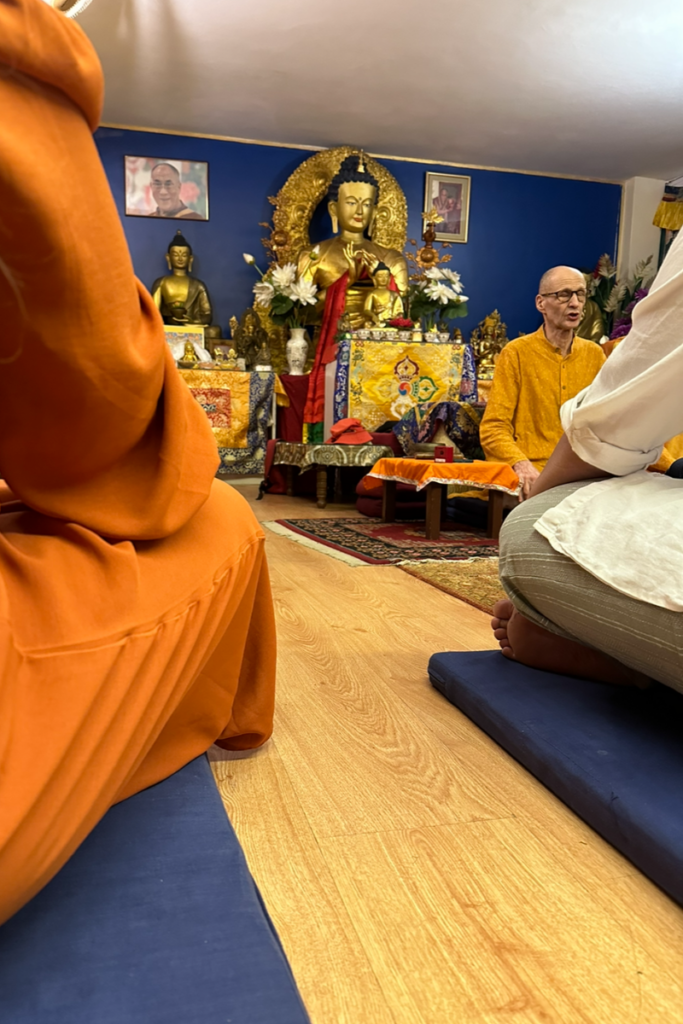
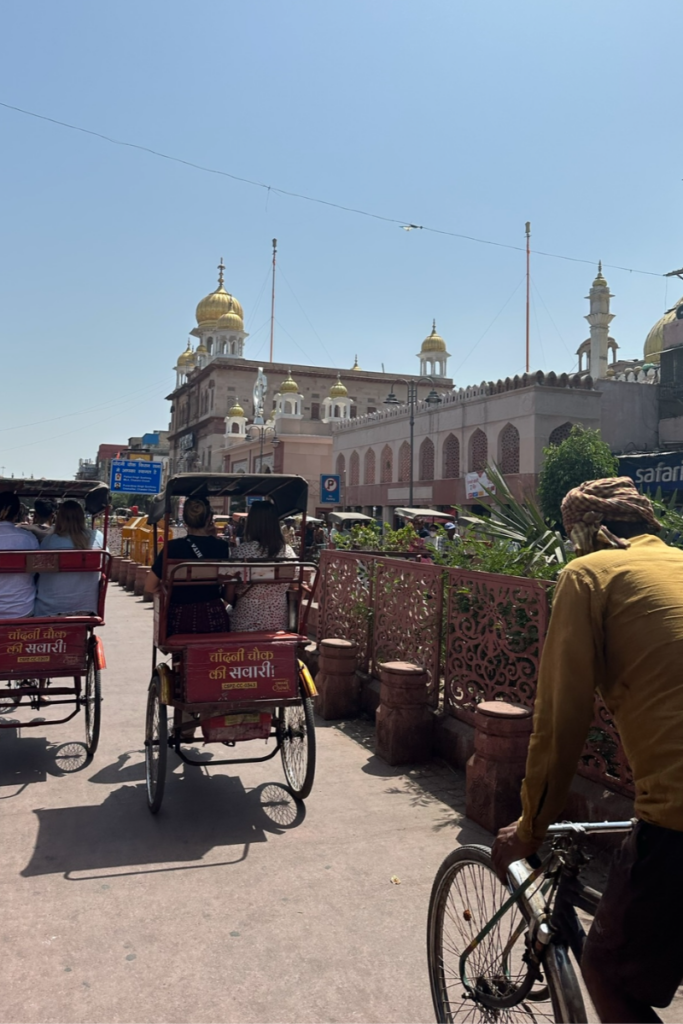
Spirituality
India is the birthplace of several major religions, including Hinduism, Buddhism, Jainism, and Sikhism. Spirituality permeates every aspect of life, with a myriad of temples, mosques, churches, and monasteries across the country. It’s a place where faith is celebrated, and diversity is embraced.
While taking a tuk-tuk ride through Delhi, my driver took me down many streets of the city and pointed to all the different temples, all worship centers of different religions!
It was so interesting to me that down one street alone there was a Sikh temple next to a Buddhist temple next to a Hindu temple next to a Christian Church! The diversity and harmony of faiths in one place left me utterly perplexed!
India Travel-Planning Tips
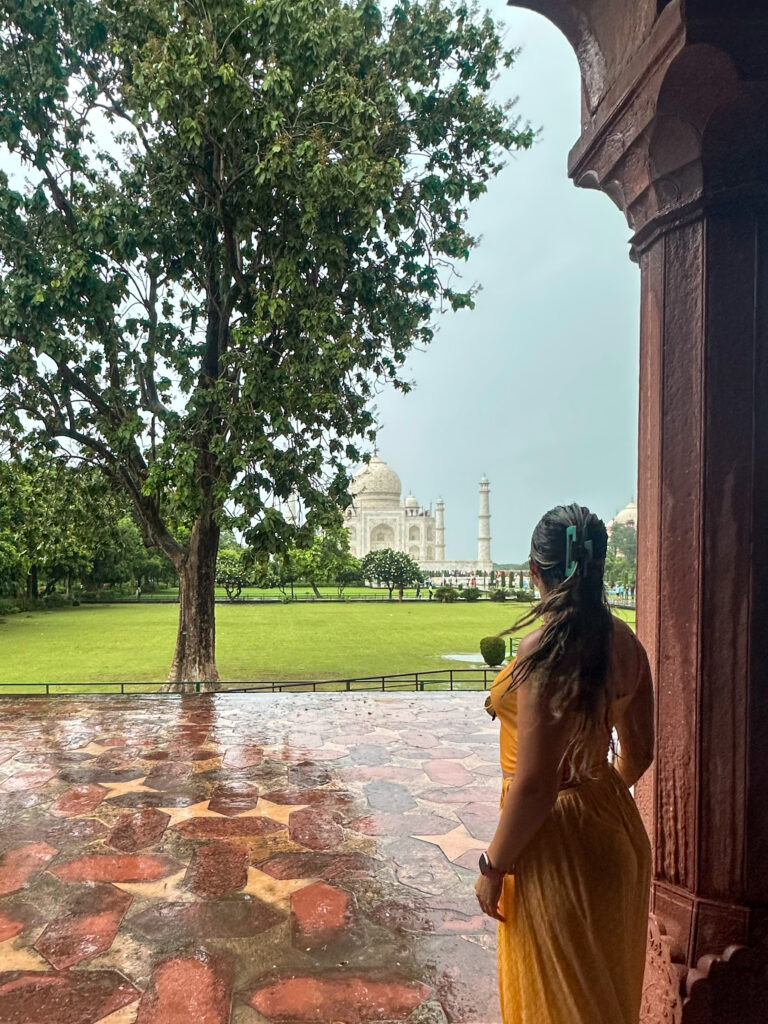
Before hopping on a plane, there are several essential considerations for planning your trip to India.
Best Time to Visit India
The best time to visit India depends on where you’re going. Generally, the cooler, dryer months from October to March are the most pleasant for travel, with festivals like Diwali, Holi, and the Pushkar Camel Fair offering a cultural extravaganza.
How Long Do You Need for a Trip to India?
To fully absorb the Indian experience, two to three weeks is a good starting point. This allows for visits to a few key regions without feeling too rushed. However, if time is limited, even a week in India can be fulfilling.
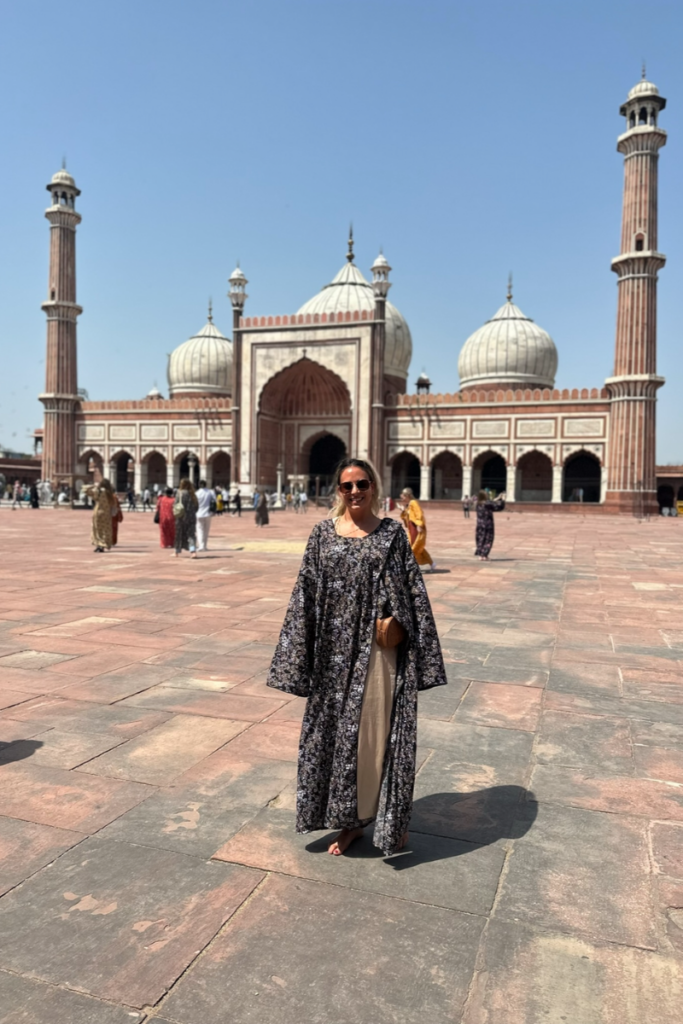
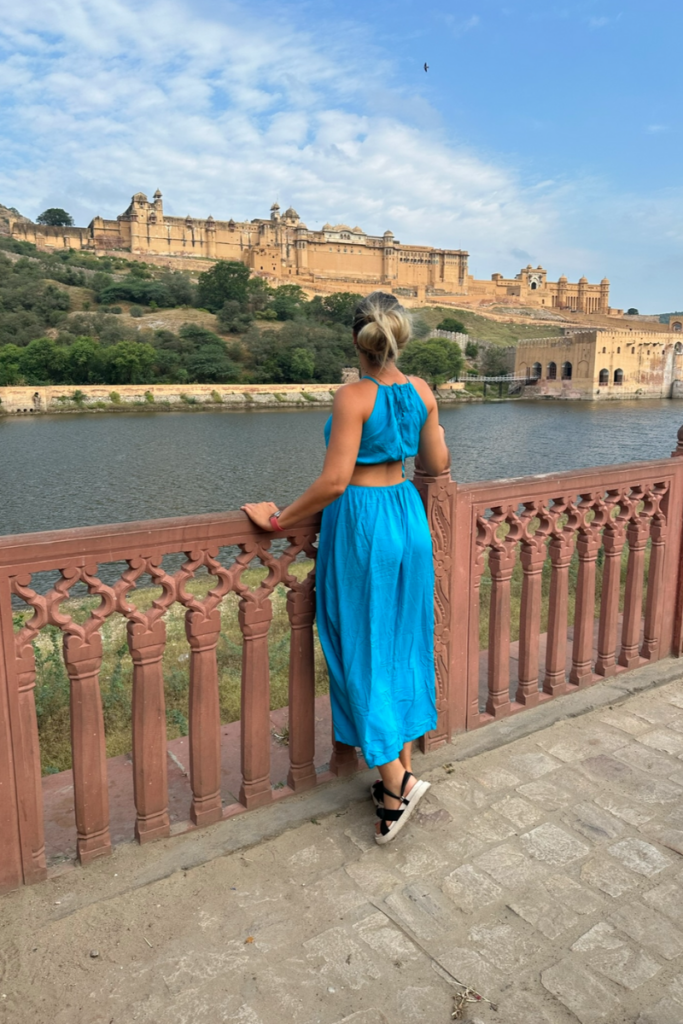
Is India Safe to Visit?
India is safe for tourists, but like any destination, it’s essential to stay aware of your surroundings, avoid risky areas, and keep your belongings secure. Always choose certified accommodations and transportation services.
- Plan your travel so you don’t arrive late at night, travel during daylight hours only.
- Be careful when posting to social media, so that you are not revealing your current location. I practice this everywhere I go, but especially in India! Every time I posted a video or photo on my Instagram, I would receive several DMs from Indian men asking if I was still in that location (I never was because I always posted AFTER I left that location). Most of these messages are harmless, but it only takes one wrong person with ill intentions.
- Stay alert to your surroundings and keep a close eye on your handbag and luggage.
- Always order your transportation with either Uber or through your hotel.
Story Time: After I touched down in Delhi, I walked over to the location where the Ubers picked up their passengers. I had ordered an Uber, but he wasn’t there yet.
While I waited, a man walked up to me and said, “I’m your ride.” With my brain being foggy from jetlag, I thought he was trying to tell me he was my Uber driver, so I got up and started walking toward him.
Luckily, I looked at my app and said “Wait a minute, it’s saying my ride isn’t here yet.” I politely told him no and sat back down. He got upset at me, and raised his voice saying, “COME NOW.” I realized that being polite wasn’t the way to go, so I looked at him firmly in the eye and said “NO” loud enough for the rest of the people waiting for Ubers to hear.
Only after that, he scoffed off.
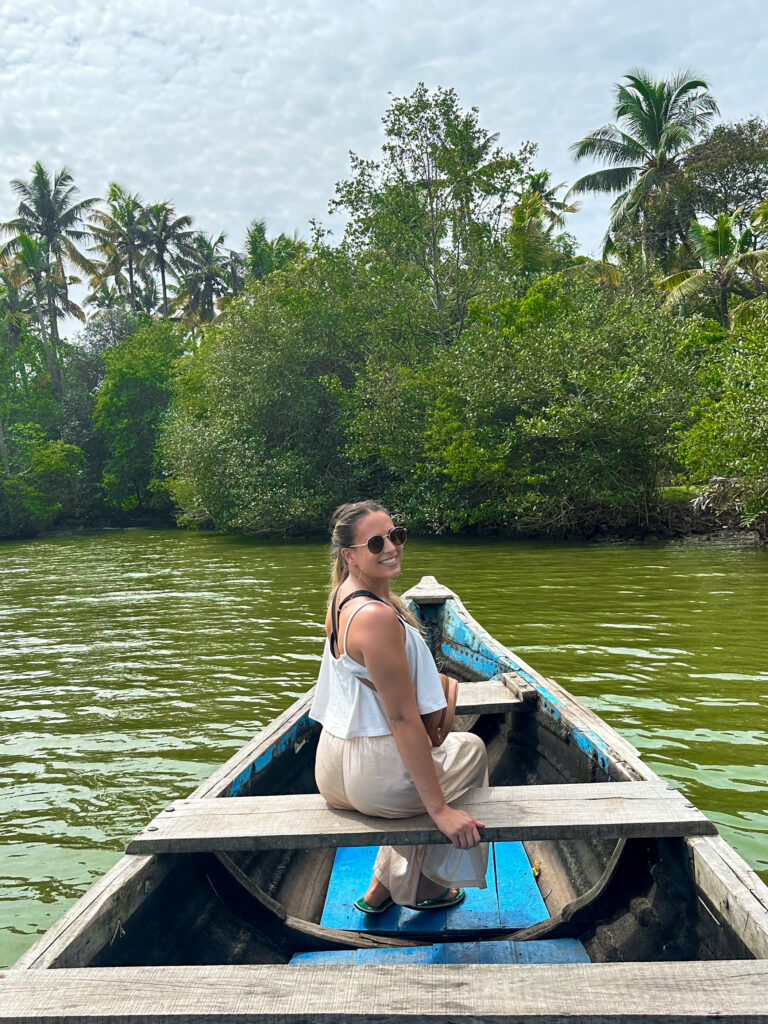
Itinerary Recommendations
Craft a realistic itinerary that allows time for unexpected delights and detours. A Rajasthan tour or the classic “Golden Triangle” that includes Delhi, Agra, and Jaipur are popular choices for first timers. I do recommend spending at least 5-7 days in South India, as it is so vastly different from the North.
If you want something a little more laid-back and serene, go to Kerala. If you want to party, go to Goa.
I spent 6 days in Kerala for an Ayurvedic yoga & meditation retreat. It was so vastly different from anything I’ve ever done before, I wrote a post about it, here. (coming soon)
Things You Should Know & Travel Tips for India
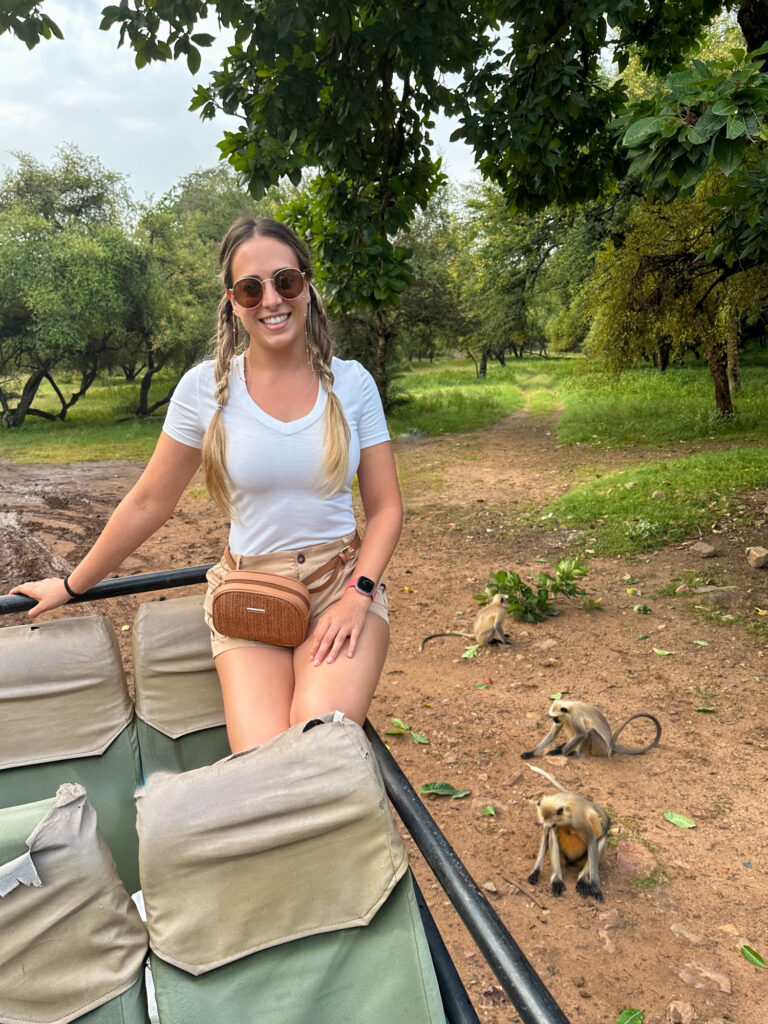
You Need a Visa to Enter India
Visas are required for most international visitors and can be applied for online. I actually found the application process to be quite difficult, so I recommend getting this done as soon as possible (at least two weeks before your trip). My first visa application was denied because I failed to upload the pictures in the correct format, causing me to have to redo the entire process and pay another $25 fee.
Also, when you get the email confirming your visa approval, it can be a bit unclear what you should print and show officials.
As it turns out, you aren’t emailed the document you’ll need to print out to enter the country — and to board the plane to India. Many people will only print out the email confirming their visa — that is not what you need.
I, luckily, found the proper document to print along with my confirmation email (after being denied entry to Vietnam, I’ve become very diligent on entry requirements and will print out literally EVERYTHING!).
When your visa has been approved, go back to the visa application site and click “visa status.” After entering your information, click “print status” at the bottom of the screen, and the proper form should start to download. It should have your photo and a bar code on it – THIS is what you’ll need to get through customs.
Pack Light
Traveling in India can be tough with big suitcases, so think about bringing a carry-on or a backpack instead. Dragging a huge suitcase around on those roads filled with potholes, trash, and animal poo? No thanks. Also, buses and trains might not allow you to bring a big bag on board; you might have to store it in a separate cabin. Personally, I prefer to keep my stuff with me whenever I travel.
What to Wear in India
Pack modest clothing suitable for the climate. Lightweight, breathable fabrics are best, and it’s a good idea to carry a scarf or shawl to cover up in religious sites. I wrote an entire post on what to wear while traveling in India, here.
See also:
Driving in India
Transportation in India can be a culture shock. Expect heavy congestion and a unique road ‘language’ that involves frequent honking.
Street Food Dos and Don’ts
India is a street food paradise, but be cautious about what you eat to avoid the infamous “Delhi Belly”. Stick to food that’s freshly cooked and served piping hot.
After getting terrible food poisoning in Laos, I’ve been more cautious about eating street food when visiting different countries. I mainly eat in busy restaurants with a high turnover or at the hotel. This is my personal preference based on almost dying from street food several years ago, but many YouTubers and bloggers feel differently and will advise you to experience street food. You do what’s best for you!
Avoid the tap water
India’s tap water is not safe to drink, and it’s advised to stick to bottled water during your trip. This also extends to brushing your teeth with bottled water and avoiding ice in drinks.
I was very pleased that the tour I was on for the Golden Triangle provided water bottles throughout the day. And when I was on retreat in Kerala, the center had a water purifier on site.
Money
The official currency is the Indian Rupee. ATMs are widespread, but they can be unreliable, so it’s wise to have cash on hand. Small bills are handy for tipping and haggling.
Obtaining Rupees outside of India can be challenging, so it’s best to just get your Rupees when you get to India. Some people will use the airport currency exchange counter, some will try to track down an ATM. Many hotels will exchange your U.S. dollars for Rupees as well, which is what I did as I found the exchange rate to be much better than at the airport.
Be careful relying on ATMs as sometimes they are hard to find and can be unreliable at times. It is not impossible, though. I had to use an ATM while in Jaipur and once while in Kerala. I just asked my guide or the hotel front desk where the most reliable and safe ATMs were, and they pointed me in the right direction.
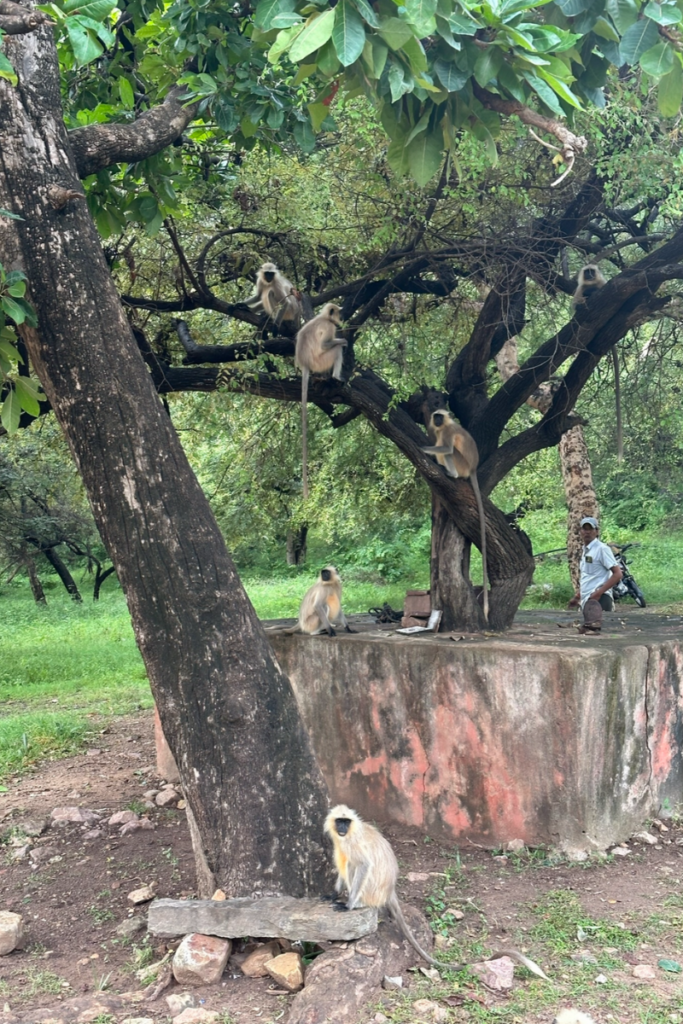
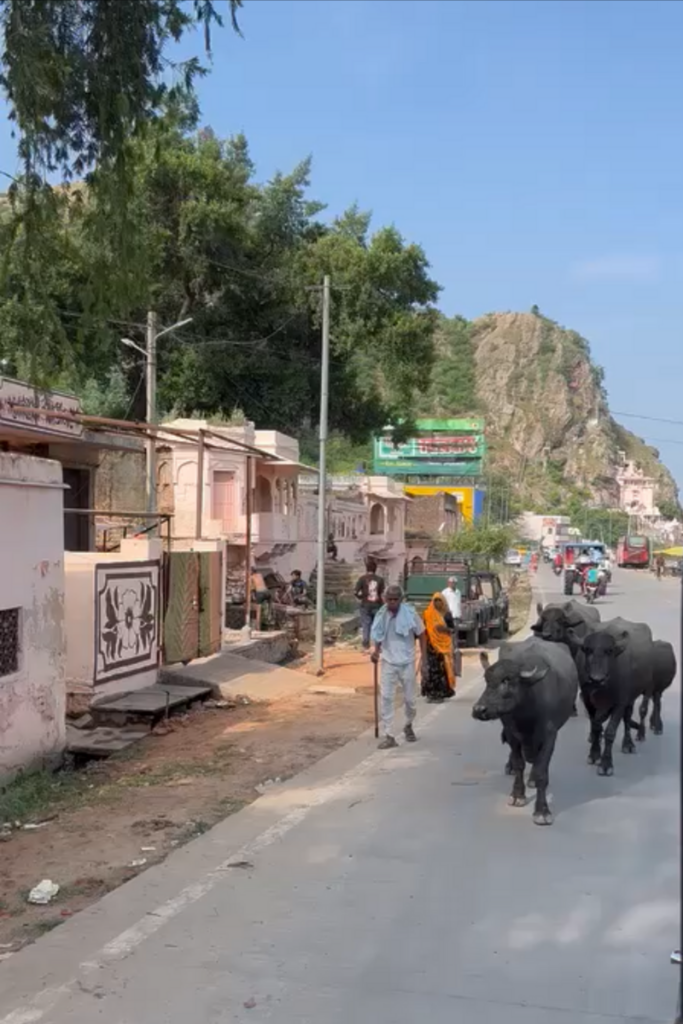
Get Used to Animals Everywhere
India is known for its animal richness. You can encounter monkeys, cows, rats, dogs, and even the occasional elephant in some places. While I was strolling through the streets of Kerala, I came across an elephant just hanging out in someone’s backyard!
Smells, Pollution, and Trash
India is a land of contrasts and sensory experiences. Be prepared for strong scents.
The bad smells in certain Indian cities come from different issues like poor waste management, open defecation, industrial pollution, and high population density. Insufficient sewage systems and waste disposal setup can lead to garbage and sewage buildup, unfortunately causing some unwanted smells.
Avoid Mosquito Bites
India is a country that experiences malaria outbreaks, so it’s crucial to take precautions to prevent mosquito bites. This includes using insect repellent with high DEET, wearing long-sleeved clothing, and sleeping under a mosquito net when necessary. I went through an entire can of bug spray on my trip, the mosquitoes were no joke!
Respect etiquette at religious sites
India is home to many sacred sites, and it’s essential to respect the local customs and etiquette when visiting. This includes removing your shoes before entering a temple or mosque, dressing modestly by covering your shoulders and legs and asking permission before taking photos.

Street harassment is unfortunately common
In northern India, you’ll find yourself dealing with beggars and sellers at every tourist site. Dealing with them, you’ll have to grow some thick skin to firmly say no, and even look away and ignore them. I found them to be very pushy, so the best way to handle them was to firmly say “no,” and walk away. If they follow you and continue to harass you, just ignore them until they get the hint. They will eventually move on to another tourist.
South India is very different, and I didn’t face any harassment. The locals are very polite, and it’s easier to strike up conversations with people.
Don’t be too precious about your personal space
Personal space isn’t really a thing in India. You’ll be squished on public transport and squeezed in elevators. Folks might throw some personal questions your way that can feel a bit awkward and intense. Embrace it as part of the cultural immersion and don’t take it personally.
Tipping is expected
Tipping is a common practice in India, so be prepared to tip for services like restaurant meals, taxi rides, and tour guides. It is recommended to give about 5%–10% in tips. It’s also expected to tip bathroom attendants every time you use a public restroom. This is why it’s always a good idea to carry small bills.
Always carry toilet paper with you
Many public restrooms in India do not provide toilet paper, so it’s smart to carry some with you at all times. Additionally, it’s common for toilets to be the “squat potties” which are basically just holes in the ground you squat over.
Food
The food scene in India is like a dream for vegans and vegetarians! As a vegetarian myself, I had no trouble finding mouthwatering veggie options everywhere I went. It’s all because of India’s religious and cultural practices.
Hinduism, the main religion here, really promotes vegetarianism due to the principle of ahimsa (non-harming). Plus, many folks here believe that meat isn’t great for health and can lead to illnesses. But don’t worry, if you’re a meat lover, there are still loads of tasty dishes for you to dig into!
Don’t worry about the food being too spicy, either. In my opinion, Indian food isn’t particularly spicy as it’s richer in diverse flavors. Many restaurants will also tone down the spice if they see you’re a tourist as well. In many eateries, I had to specifically ask the waiter to make my food “Indian spicy” and not “American spicy.”
Of course, everyone’s taste pallet is different. Don’t be afraid to ask your server for “no spice” and they’ll do their best to accommodate you.
India is not an easy place to travel. It’s not a relaxing vacation destination. It is, though, an experience — often a life-changing experience.

Reina Conboy
I am a full-time traveling registered nurse, fitness enthusiast, and plant-based nutrition expert. Every morning I wake up intending to bring awareness of the importance of health and spiritual wellness, especially to the traveling community. This blog is designed to bring you travel and health advice while sprinkling in some fun life stories.
Join my newsletter
* We will never share your details with any third party